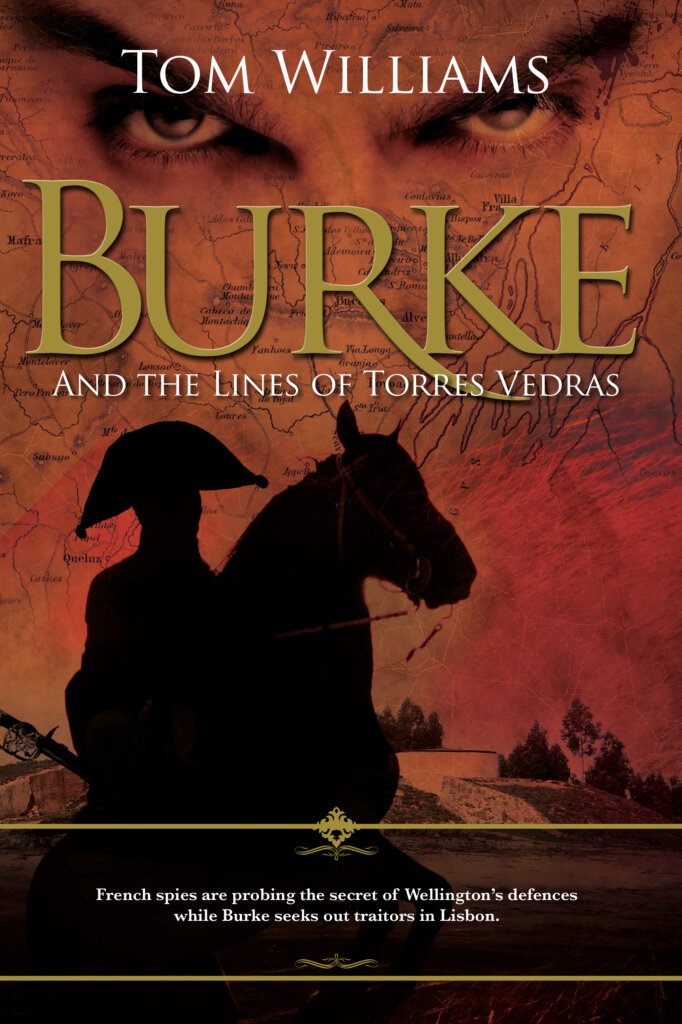I’ve got a new book out this week: Burke and the Lines of Torres Vedras. By now I’m getting a bit tired of talking about it (though I’ve forced myself to put a paragraph or two at the end of this post). I’d like to talk about a book by someone else. It’s particularly good to be able to talk about a book I’ve really enjoyed. So here we are with The Fortune Keeper, the third of Swift’s Italian Renaissance series.
The story starts with Giulia Tofana, introduced in The Poison Keeper, still living in the Jewish ghetto in Venice with her lover Fabio. Things have changed, though. She has had two children who both died and she and Fabio have adopted Mia, a young girl now on the cusp of womanhood. The new setup marks a sharp change of gear from the previous story, The Silkworm Keeper. According to a historical note at the end of the book, this was driven largely by the need to adapt the story to take account of new information about Giulia Tofana that has turned up since the first in the trilogy, The Poison Keeper, was written. Whatever the reason, it’s worked out very well. The Poison Keeper is a brilliant book, but keeping the plot going for a second in the series was a stretch and I wasn’t sure that a third would work. The reset that the new research has made necessary means that The Fortune Keeper is able to draw a deep breath and, to a degree, start again, bringing new life to the series.
Not that we are starting from scratch. Several characters and incidents from the previous books feature crucially in the plot. Although The Fortune Keeper works as a standalone novel it would benefit a lot from a brief summary of the key points of the earlier books to guide any new readers.
So what does The Fortune Keeper offer? Firstly, a wonderful view of Renaissance Venice. I don’t know a lot about Venetian history but I found Swift’s Venice completely convincing. It’s rich but decadent. The palaces are already crumbling; the tides regularly flood houses and businesses. It’s a city where corruption runs deep. There are gamblers and whores everywhere (though Swift resists the temptation to titillate with sex). We are in the Renaissance, so Mia is able to go to lectures on astronomy. There are new and better telescopes, but they are as often used to produce more precise horoscopes than to research the heavens. Some people are pointing out that the earth moves round the sun but the Inquisition are busy and awful penalties await those who dismiss the Church’s cosmology too openly.
We follow Mia through marketplaces, into silk workshops, on visits to an old astrologer and on and off gondolas and the Venetian equivalent of buses, traghettos, larger vessels that run to timetables. Life is governed by those traghetto timetables and the state of the tides and, as Giulia and her family live in the Jewish ghetto, by the times that the ghetto gates are locked.
There’s a little about the Jews, tolerated because they were the city’s bankers but not really trusted. (Apparently the Venetians were 300 years ahead of the Nazis when it came to making Jews wear yellow badges on their coats.) We learn, too, about the guild system among gondoliers, but this isn’t an essay on Venetian society. It’s a thriller and a romance, starting slow but building up to a dramatic and bloody climax. And, like all the best thrillers, it has a wonderful villain. The man is a fraud, a swindler and a serial killer – but he does have style.
The climax is, perhaps, a little rushed. It’s a bit like those movies where people move in the shadows, shots ring out, the villain collapses and the hero stands over him as the credits roll. Personally, I prefer the Lee Child approach to violent denouements. I want the hero to feint with his left and lead with his right and only as he lies helpless (some blackguard probably hit him from behind) does he draw the pistol concealed in his boot and bring the villain down. Maybe that’s just me but I think that if you are doing the big fight scene, go all in or go home.
Since I wrote this, I’ve read Swift’s latest, The Silk Code, where the fight scenes match anything Lee Child has done, so I’ve no idea why this one didn’t work for me. It’s quite a minor quibble in any case. The important thing is that mysteries are solved. Some relationships are cleared up (no spoilers), others not. Life moves on. As do Mia and Guilia. It will be interesting to see where Ms Swift takes them next.
Burke and the Lines of Torres Vedras
I can’t get completely free of Burke and the Lines of Torres Vedras. It’s published on Friday and it’s already available on pre-order at mybook.to/TorresVedras. It’s the seventh book about James Burke. (I did a quick run-through of the others on my blog on Friday, if you need to keep up.) It’s set in Lisbon in 1810 where James Burke is hunting down French agents who are trying to discover the secret of the Lines of Torres Vedras. What are the Lines? And what is their secret?
Read the book to find out: £3.99 on Kindle and £7.99 (special launch offer price) in paperback.



Thank you Tom, lovely that you featured the book on the blog. Thank you for your great review.
A genuine pleasure. I so enjoyed the book.